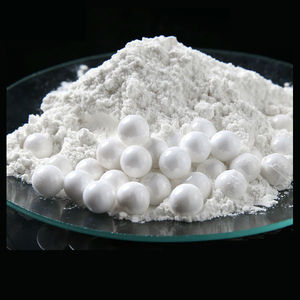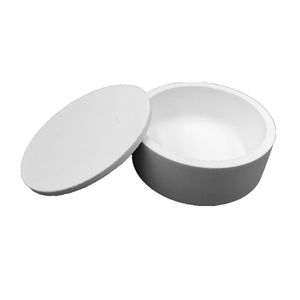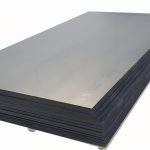Discover Premium Ceramic Products | Durability & Elegance United | Advanced Ceramics
1. Introduction
When you hear ‘silicon carbide crucible,’ your mind might not immediately jump to cutting-edge tech—but it should. Far from ordinary labware, this specialized container is a linchpin in some of the most demanding industrial processes on Earth, especially in the growth of high-purity crystals for semiconductors, LEDs, and aerospace sensors. Unlike kitchenware labeled with similar names—like ‘silicon carbide ceramic baking dish’ or ‘silicon carbide dinner ceramic plates’—a true silicon carbide crucible is engineered for extreme environments where failure is not an option.

2. The Crucible’s Role in Crystal Growth
One of the most advanced applications of the silicon carbide crucible is in the physical vapor transport (PVT) method used to grow bulk silicon carbide single crystals. These crystals form the backbone of next-generation power electronics, capable of handling higher voltages and temperatures than traditional silicon. The crucible must withstand temperatures exceeding 2,200°C while resisting chemical reactions with molten silicon and carbon vapors.
Silicon carbide’s exceptional thermal conductivity, low thermal expansion, and resistance to thermal shock make it uniquely suited for this task. Alternatives like graphite degrade too quickly, while alumina crucibles can contaminate the melt. In contrast, a high-quality silicon carbide crucible maintains structural integrity over dozens of growth cycles, ensuring consistent crystal quality and reducing production costs.
3. Silicon Carbide vs. Other Advanced Ceramics
While silicon carbide dominates in ultra-high-temperature crucibles, it’s worth comparing it to other engineering ceramics. For instance, boron carbide vs silicon carbide reveals trade-offs: boron carbide is harder but more brittle and oxidizes more readily above 800°C, making it less ideal for prolonged high-heat exposure.

Silicon nitride, another high-performance ceramic, excels in applications requiring fracture toughness and thermal shock resistance—such as custom silicon nitride heat shields or silicon nitride rings in turbine engines. However, silicon nitride crucible factories are rare because silicon nitride decomposes under the reducing atmospheres typical in crystal growth. Thus, for crucibles in extreme reducing or inert environments, silicon carbide remains unmatched.
4. Beyond the Crucible: Related Industrial Components
The same material properties that make silicon carbide ideal for crucibles also enable other high-end components. RBSiC (reaction-bonded silicon carbide) silicon carbide tile blocks line furnaces for uniform heat distribution. Silicon carbide ceramic columns and silicon carbide rings provide structural support in high-temperature reactors.
Even silicon carbide burner nozzles and silicon carbide bricks benefit from the material’s oxidation resistance and mechanical strength at elevated temperatures. Meanwhile, silicon carbide thermocouple protection tubes and silicon carbide ceramic tubes for furnace use ensure accurate temperature monitoring without contamination.

5. Debunking the ‘Silicon Carbide Dinnerware’ Myth
A quick online search reveals countless products labeled ‘silicon carbide ceramic plates,’ ‘silicon carbide ceramic casserole dish,’ or even ‘silicon carbide Christmas plates ceramic.’ In reality, these are almost always conventional stoneware or porcelain with a marketing-inspired name—not actual silicon carbide ceramics.
True silicon carbide is black, extremely hard, and not food-safe in raw form due to potential free silicon or sintering additives. Industrial-grade silicon carbide ceramic dishes aren’t used in kitchens; they’re found in labs and factories. So while ‘silicon carbide ceramic butter dish with lid’ sounds premium, it’s likely just decorative pottery—not the same material as a silicon carbide crucible.
6. Future Outlook and Material Innovation
As demand grows for wide-bandgap semiconductors, the need for reliable, high-purity silicon carbide crucibles will only increase. Innovations in sintering techniques and composite designs—such as silicon carbide-zirconia tubes or porous silicon carbide ceramic tubes for filtration—are expanding the material’s utility.
Meanwhile, the high purity silicon nitride powder market continues to grow for complementary applications, but silicon carbide remains the gold standard for crucibles in crystal growth. Manufacturers are also exploring hybrid systems, like silicon carbide ceramic pipe networks integrated with silicon nitride insulators, to optimize entire high-temperature processing lines.
7. Conclusion
The silicon carbide crucible may be a small component in the grand scheme of semiconductor manufacturing, but its role is monumental. By enabling the production of ultra-pure, defect-free crystals under extreme conditions, it powers the electronics of tomorrow. While consumer products may borrow its name for aesthetic appeal, the real magic of silicon carbide lies in its industrial might—where performance, not presentation, is everything.
Our Website founded on October 17, 2012, is a high-tech enterprise committed to the research and development, production, processing, sales and technical services of ceramic relative materials such as Why. Our products includes but not limited to Boron Carbide Ceramic Products, Boron Nitride Ceramic Products, Silicon Carbide Ceramic Products, Silicon Nitride Ceramic Products, Zirconium Dioxide Ceramic Products, etc. If you are interested, please feel free to contact us.
